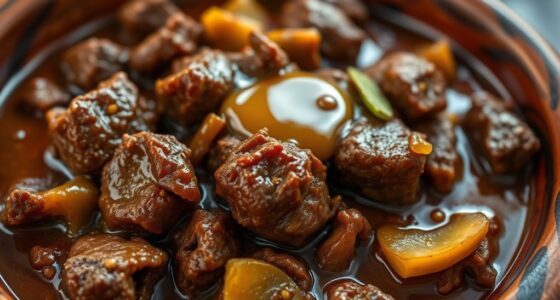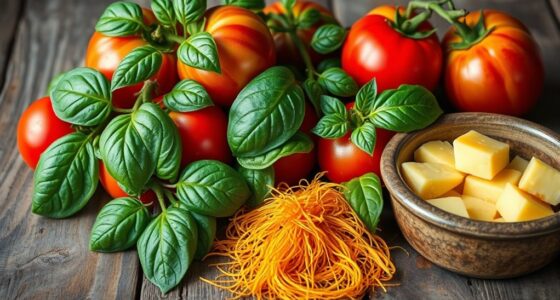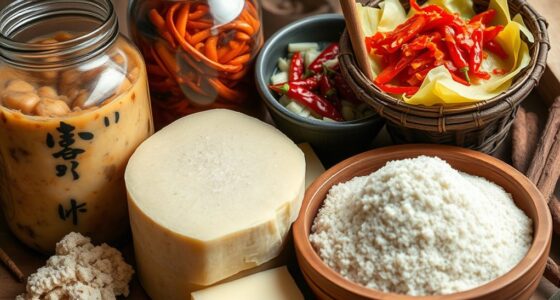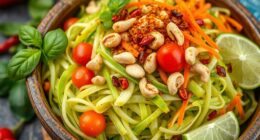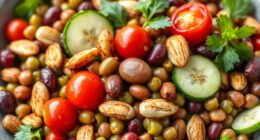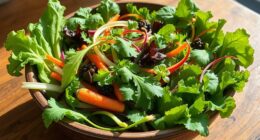Imagine sitting around a table laden with vibrant colors and tantalizing aromas. As you gather with friends or family, the warmth of shared stories fills the air, entwined with the rich fragrances of traditional Turkish food. Perhaps it’s the first time you’re trying authentic Turkish cuisine, or a nostalgic return to dishes that once warmed your heart. Each bite invites you into a world of flavors, where every dish holds a tale from a time-honored culture. From the spicy kick of Adana Kebabs to the sweet embrace of classic baklava, Turkish culinary delights beckon you to embark on a flavorful journey through Turkey’s diverse regions and traditions.
Key Takeaways
- Turkish cuisine offers a unique blend of Mediterranean, Middle Eastern, and Eastern European influences.
- Some must-try dishes include Adana Kebab, Iskender Kebab, and delicious mezes.
- Baklava is a quintessential Turkish dessert, often made with pistachios or walnuts.
- The traditional Turkish breakfast is a vibrant meal, often featuring simit, menemen, and a variety of cheeses.
- Beverages like Ayran and Turkish coffee enhance the dining experience, showcasing the rich tradition of Turkish hospitality.
Introduction to Turkish Cuisine
Turkish cuisine is a vibrant tapestry woven from centuries of history, culture, and tradition. Renowned as one of the world’s top cuisines, it stands proudly alongside French, Chinese, and Italian culinary practices. This rich culinary culture of Turkey encompasses a wide array of authentic Turkish dishes that reflect the country’s geographic diversity.
The influence of various regions of Turkey significantly shapes its traditional Turkish food, showcasing a delightful variety of flavors. Families partake in communal meals, highlighting the importance of shared experiences. Typical dining structures vary throughout the day, with breakfast being a basic yet satisfying meal during the week, while weekends often reveal a feast of diverse foods.
In Turkey, bread holds an esteemed place in daily consumption, with individuals averaging a staggering 199.6 kg (440 lbs) per year. This demonstrates the centrality of traditional Turkish food in the dining experience. A homemade Turkish dinner follows a customary pattern: starting with a warm soup, followed by a vegetable dish, complemented by meat or legumes, and typically served alongside rice or bulgur wheat.
Chicken has gained dominance in the hearts and plates of the Turkish people, with its consumption surpassing that of beef and lamb combined. Kebabs are a beloved staple, frequently enjoyed during family outings and picnics. The culinary landscape is further enriched by a wealth of soups, boasting over 200 types, each offering unique and comforting flavors.
In summary, Turkish cuisine is more than just food; it is an expression of cultural heritage that invites you to explore its layers and indulge in its unforgettable flavors. 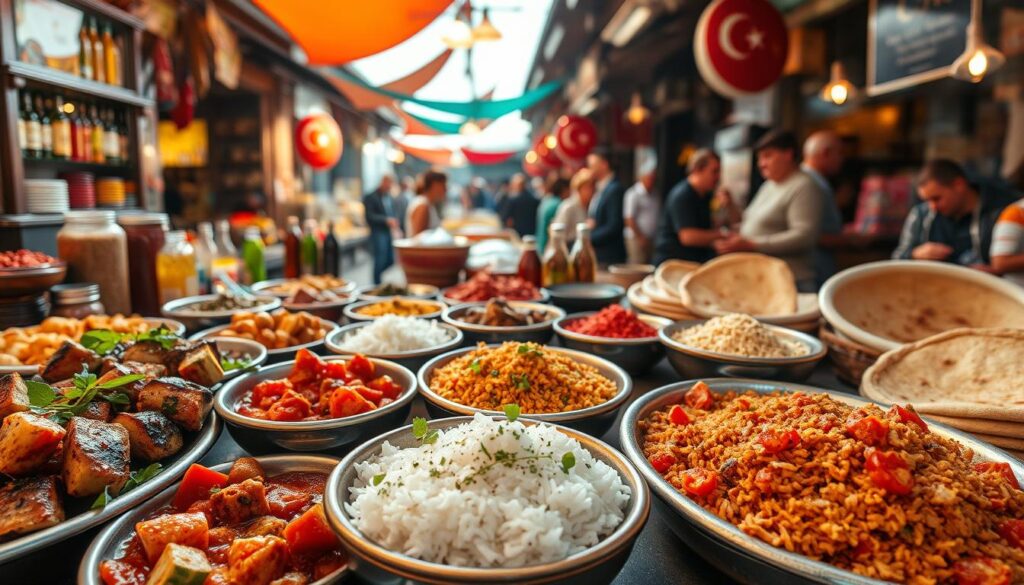
The Essentials of Turkish Ingredients
Exploring Turkish cuisine unveils a rich tapestry of Turkish ingredients that create unforgettable flavors. The diverse geography of Turkey contributes to a unique blend of ingredients, making the country’s culinary offerings distinct and flavorful. From the Mediterranean coast to the mountainous regions, the variety of ingredients reflects local traditions and practices.
Olives: A Holy Grail of Flavor
When you think of olives, you’re tapping into a quintessential component of flavors of Turkey. Turkey ranks among the largest producers of olives, with the Aegean and Marmara regions renowned for their high-quality varieties. Olive oil, an essential ingredient in countless Turkish dishes, not only enhances the taste but also promotes various health benefits. Its application extends from salads to baked goods, solidifying olives as a beloved staple in Turkish cuisine.
Herbs and Spices: The Secret Blend
Achieving depth in flavor requires a skilled blend of herbs and spices in Turkish cooking. Commonly used herbs like parsley, mint, and dill brighten dishes, while Turkish spices, such as cumin, sumac, and red pepper flakes, provide robust notes that make each meal special. The balance of these ingredients, showcased in many traditional recipes, elevates the overall flavors of Turkish cuisine. From iconic dishes like kebabs to refreshing mezes, the careful layering of flavors creates an unforgettable dining experience.
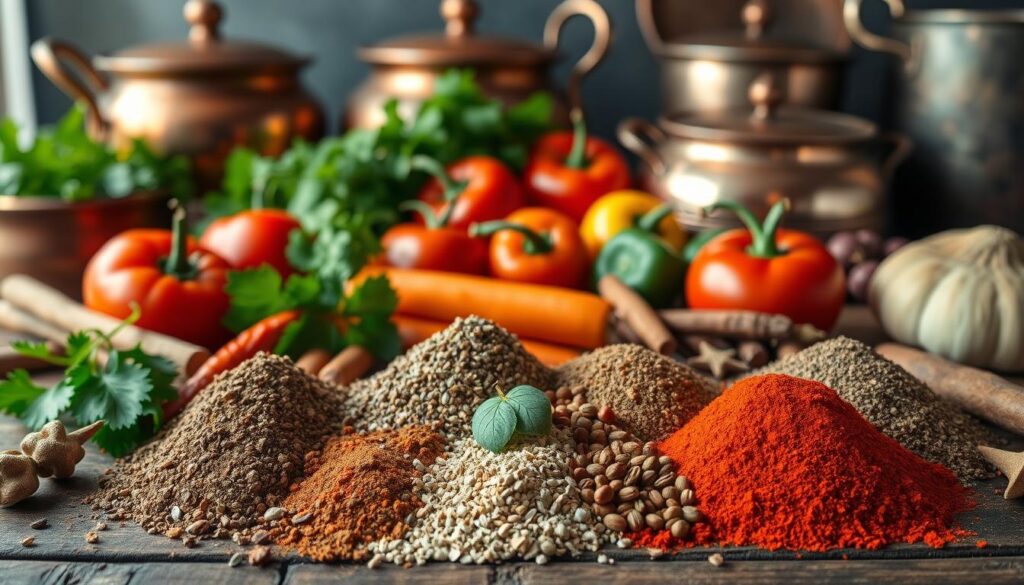
Popular Turkish Dishes You Must Try
Turkish cuisine boasts a stunning variety of dishes that reflect the rich cultural heritage of the country. Influenced by Mediterranean, Middle Eastern, and Central Asian flavors, each dish showcases unique regional ingredients and preparation methods. You will find everything from grilled delights to sweet treats that tantalize your taste buds. Here are some of the must-try Turkish dishes.
Kebabs: A Grill Lover’s Dream
Kebabs are among the most famous Turkish dishes, representing a cornerstone of traditional Turkish food. With over 110 varieties, you can indulge in flavors like Adana kebab, known for its spicy minced meat, or the classic Iskender kebab, featuring thinly sliced döner served on pide bread, topped with tomato sauce and yogurt. Each kebab variant celebrates grilling traditions and often pairs perfectly with fresh salads.
Mezes: A Taste of Variety
Mezes serve as the perfect introduction to Turkish appetizers, offering a vibrant array of small dishes to share. These culinary delights include hummus, stuffed grape leaves, and various eggplant dishes. Each meze reflects the diverse palate of Turkish cuisine, inviting you to a communal dining experience where you can sample a little of everything.
Pide: Turkish Pizza at Its Best
Pide, often referred to as Turkish pizza, is a delightful bread shape offering a variety of fillings. Popular across Turkey, its crispy crust and tasty toppings, including cheese, minced meat, and vegetables, make it a favorite. Explore regional recipes for pide to discover local interpretations that highlight unique ingredients and flavors.
Baklava: A Sweet Finish
Baklava stands out as one of the most iconic Turkish desserts. With its rich layers of filo pastry, filled with nuts and drenched in sweet syrup, it has delighted palates for generations. Variants like pistachio and walnut baklava offer a fascinating exploration of textures and flavors, making it the ideal sweet treat from Turkey to end your meal.

Traditional Cooking Methods in Turkey
Exploring traditional Turkish cooking methods reveals a rich tapestry of flavors and techniques that have been refined over centuries. Two hallmark approaches stand out: tandoor cooking and stewing. Both methods not only enhance the taste of various ingredients but also bring out the essence of authentic Turkish recipes.
Tandoor: The Art of Clay Oven Cooking
Tandoor cooking represents a vital aspect of traditional Turkish cooking methods. This ancient technique involves a clay oven heated with charcoal, achieving remarkably high temperatures. Foods cooked in a tandoor acquire a distinct smoky flavor that elevates meats and breads. Kebabs, for instance, cooked using this method tend to be juicy and tender, showcasing the benefits of high-heat cooking. Traditional breads baked in tandoors, such as lavash, reflect the simplicity yet heartiness found in Turkish cuisine.
Stewing: Slow-Cooked Perfection
Stewing holds a special place in the hearts of many when it comes to stews in Turkish cuisine. Utilizing slow cooking methods, dishes like keşkek create a wonderful harmony between tender meats and grains. Left to simmer for hours, the flavors blend beautifully, often resulting in hearty Turkish dishes that invite family and friends to gather around the table. This method emphasizes the Turkish tradition of serving comforting meals, often prepared for family gatherings and celebrations.

Regions and Their Unique Cuisines
Turkey is home to seven distinct culinary regions, each offering a unique tapestry of flavors. The culinary landscape reflects geography and climate, contributing to the rich culinary diversity in Turkey. Each region presents specific traditions and specialties that highlight local ingredients.
The Aegean cuisine showcases an impressive selection of olive oil-based dishes called zeytinyağlı, often served cold. This region is also known for its focus on heart-healthy fats and fresh produce, embodying the Mediterranean diet. In contrast, the Mediterranean Region is filled with spicy mezze, with dishes such as acılı ezme taking center stage. Kebabs hold a crucial position across Turkey, with Mediterranean interpretations like tantuni providing a unique twist.
The Marmara Region shines through its bustling street food scene, featuring delightful options like simit and köfte. A visit to Istanbul isn’t complete without indulging in the region’s famed baklava, known for its rich flavor and delicate texture. Meanwhile, the Black Sea Region is famous for its fresh hamsi (anchovies), particularly celebrated during cooler months. Corn is also a staple here, making its way into traditional dishes like mısır ekmeği (cornbread).
Central Anatolia presents heartier culinary choices, inviting you to savor dishes like mantı (Turkish dumplings) and keşkek (wheat and meat stew). Eastern Anatolia boasts a variety of kebabs, with cağ kebabı being a highlight from Erzurum. The Southeastern Anatolia region is marked by bold flavors, famous for the pungent spice blend in Adana and Urfa kebabs. Gaziantep stands proud as the heartland of baklava, where the desserts’ rich flavors and delicate texture prove irresistible.

| Region | Specialties | Notable Ingredients |
|---|---|---|
| Aegean | Zeytinyağlı dishes | Olive oil, vegetables |
| Mediterranean | Spicy mezze, Kebabs | Spices, fresh herbs |
| Marmara | Simit, Baklava | Wheat, pistachios |
| Black Sea | Hamsi, Cornbread | Fish, corn |
| Central Anatolia | Mantı, Keşkek | Wheat, meat |
| Eastern Anatolia | Cağ kebabı | Lamb, spices |
| Southeastern Anatolia | Urfa kebabs, Baklava | Pistachios, spices |
As you explore these regional Turkish cuisines, you’ll uncover a delightful array of flavors that showcase the culinary diversity in Turkey, inviting you to experience the rich tapestry of local traditions.
Key Flavors and Pairings in Turkish Meals
In Turkish cuisine, vibrant flavors and fresh ingredients create a delightful dining experience. Pairing traditional dishes with the right complements enhances the meal’s essence. Yogurt and fresh salads play significant roles in this culinary landscape.
Yogurt: A Creamy Companion
Yogurt in Turkish cuisine serves as a staple, adding a creamy texture and tangy flavor to various dishes. You will find yogurt dishes accompanying spicy kebabs or mezes, where its cooling effects balance the heat. It is also a common ingredient in traditional Turkish meals, contributing to the richness and depth of flavors. Dips made with yogurt, such as cacık, often include fresh herbs like dill and mint, showcasing the emphasis on fresh ingredients in Turkish cuisine.
Sums: Freshness on Your Plate
Turkish salads, known for their fresh and vibrant components, are essential to any meal. Commonly comprising tomatoes, cucumbers, and bell peppers, these salads often get a sprinkle of sumac, which adds a tangy and lemony kick. Incorporating fresh herbs and a drizzle of olive oil accentuates the flavors in Turkish dishes. The balance of these fresh ingredients not only creates a delightful taste but also enhances your overall dining experience.

Turkish Breakfast: A Meal to Remember
The Turkish breakfast, known as “kahvalti,” serves as a delightful prelude to the day. It stands as the most significant meal in Turkish culture, inviting family and friends to gather and share an array of vibrant flavors. This meal isn’t just about food; it embodies tradition and social interaction, showcasing a rich palette of traditional breakfast items that highlight the culinary wealth of Turkey.
Simit: The Ultimate Sesame Bagel
Simit, a beloved component of Turkish breakfast, resembles a bagel but is lighter and has a distinct flavor due to the coat of sesame seeds. This sesame-encrusted bread complements cheeses and olives wonderfully. With a soft texture and inviting aroma, simit is enjoyed by a large portion of households throughout Turkey, often served fresh from local bakeries. Whether you prefer it plain or with kaymak (clotted cream) and honey, simit elevates any Turkish breakfast to a memorable experience.
Menemen: A Savory Egg Delight
Menemen is arguably one of the most cherished Turkish egg dishes, featuring a savory blend of eggs mixed with tomatoes, green peppers, and spices. Served hot, this colorful dish is a staple in many Turkish homes, symbolizing comfort and satisfaction. The preparation usually involves sautéing the vegetables in olive oil before folding in the eggs until they reach the desired consistency. Enjoying menemem alongside bread is a delightful way to savor the diverse flavors that define traditional breakfast in Turkey.
In summary, a typical Turkish breakfast becomes an enriching experience, celebrating flavors like simit and menemem alongside a variety of cheeses, olives, fresh vegetables, and sweet preserves. This morning feast encapsulates the essence of Turkish culture, promoting communal dining and shared enjoyment in every bite.
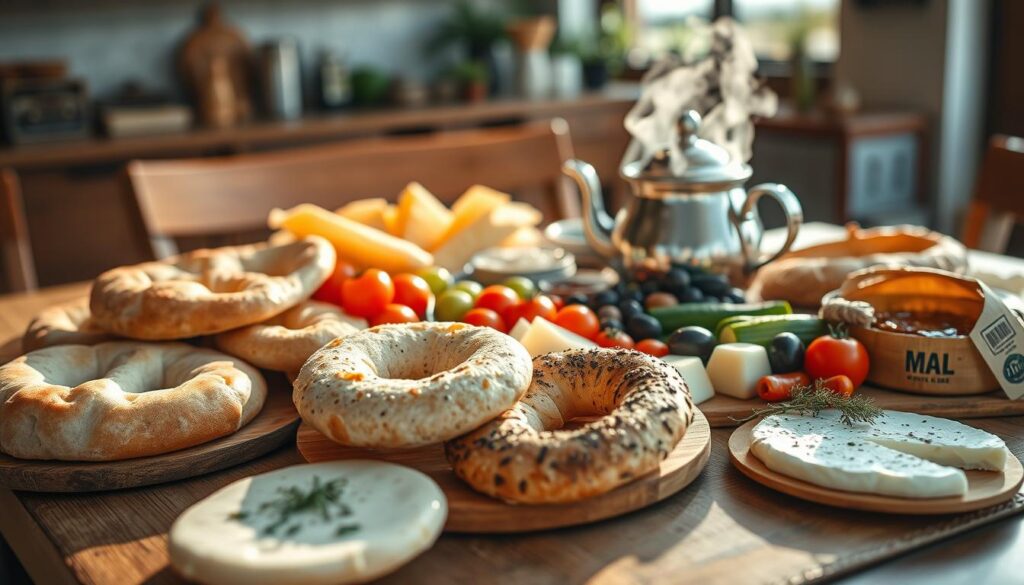
Popular Drinks to Accompany Turkish Meals
When indulging in the rich flavors of Turkish cuisine, don’t overlook the delightful beverages that enhance the dining experience. Whether complementing savory dishes or refreshing the palate, traditional Turkish drinks play a significant role. Ayran and Turkish tea stand out as popular choices, embodying the culture and hospitality of Türkiye.
Ayran: The National Drink
Ayran, a beloved yogurt beverage, is a staple across the country. This refreshing drink balances the spices in Turkish dishes, making it an ideal companion during hot summer days. Its creamy texture and cooling properties bring a satisfying contrast, allowing you to fully enjoy the rich flavors of meals. Locals and tourists alike gravitate towards ayran for its delicious taste and health benefits.
Turkish Tea: A Time-Honored Tradition
No culinary journey through Türkiye is complete without experiencing çay, or Turkish tea. A cornerstone of tea culture in Turkey, it is deeply integrated into everyday life and social gatherings. Prepared in a unique two-teapot system, the tea develops a strong and aromatic flavor that warms the heart. Served in small tulip-shaped glasses, çay fosters connection and conversation, symbolizing hospitality throughout the nation.

| Drink | Type | Main Ingredients | Cultural Significance |
|---|---|---|---|
| Ayran | Yogurt Beverage | Yogurt, Water, Salt | Popular with meals, especially in summer. |
| Turkish Tea | Tea | Black Tea Leaves, Water | Essential for social gatherings, represents hospitality. |
| Rakı | Alcoholic Beverage | Anise, Grapes | Commonly enjoyed with mezes, enhances festive occasions. |
| Boza | Traditional Fermented Drink | Fermented Grains, Water, Sugar | Popular in winter, served warm with chickpeas. |
Special Occasions and Turkish Cuisine
In Turkey, Turkish cuisine for special occasions takes center stage during various celebrations, especially during major festivities and feasts. Events like Bayram (Eid al-Fitr and Eid al-Adha) highlight the significance of food in community gatherings. Elaborate meals filled with a variety of dishes reflect the rich culinary traditions that have been passed down through generations.
During Bayram, a notable tradition involves the distribution of sacrificial meat, which fosters a sense of community. Families often share portions with neighbors and those in need, strengthening ties and promoting equality. This communal spirit is not only evident in the sharing of food but also in the long journeys families undertake to reunite for these festive meals.
Each region in Turkey brings its unique flair to festive foods. In Eastern Turkey, dishes like Stuffed Lamb Ribs (Kaburga Dolması) shine, while the Aegean Region showcases olive oil-based vegetable dishes such as Artichokes (Enginar). Central Anatolia offers Manti, delicious Turkish dumplings served with yogurt and garlic sauce, and the Black Sea Region features seafood specialties. No matter the region, the diverse flavors unite to create memorable meals.
Desserts play a crucial role during these celebrations. Iconic treats like baklava, made of layers of phyllo dough, honey, and nuts, are often shared as gifts during Bayram. Other sweet options like Sütlaç (Rice Pudding) add a delightful end to festive gatherings. Traditional drinks, including Turkish tea and coffee, enhance the dining experience, rounding out the meal beautifully.
Turkish cuisine for special occasions is highly visual, often showcasing decorative serving dishes and small plates for meze (appetizers). This attention to presentation complements the communal dining experience. During these special moments, the combination of traditional dishes, delicious desserts, and vibrant drinks creates a festive atmosphere that celebrates food, family, and unity.

The Role of Turkish Hospitality in Dining
Turkish hospitality is renowned worldwide, profoundly influencing dining customs in Turkey. When you enter a Turkish home, expect a warm welcome, often accompanied by an array of enticing food and drinks. This deeply ingrained cultural process reflects respect and affection, showcasing the cultural significance of meals in Turkish society.
One of the central components of Turkish dining is the ritual of serving food to guests. Traditional dishes such as kebabs and pilafs highlight the abundance valued in Turkish meals, while sweets like baklava and Turkish delight symbolize generosity. These offerings play a key role in fostering connections and enhancing social gatherings.
Meals often begin with mezes, a variety of small appetizers that make the dining experience lively and interactive. Following the mezes, the main courses celebrate the richness of Turkish flavors, supported by the aromatic spices found in dishes like hummus, seasoned with cumin to elevate taste.
Sharing çay in tulip-shaped glasses or Turkish coffee served alongside small treats reflects the essential role beverages play in hospitality. The emphasis on presentation enhances the appreciation of these customs. During special occasions, such as weddings or religious holidays, elaborate dishes such as stuffed grape leaves (dolma) or manti (Turkish dumplings) appear, showcasing the festive spirit central to Turkish culture.
Dining customs in Turkey extend beyond the table. The act of offering sweets, nuts, or handcrafted gifts to guests reinforces social bonds during mealtime. As the popular saying goes, “Basimin ustunde yerin var,” expressing the high regard for guests. With millions of tourists visiting annually, the essence of Turkish hospitality continues to shine brightly, particularly in cities like Istanbul, known for its welcoming atmosphere.

Vegetarian and Vegan Options in Turkish Cuisine
Turkish cuisine showcases a rich variety of vegetarian dishes and healthy vegan options in Turkish cuisine. The emphasis on fresh vegetables, legumes, and grains highlights the versatility of this flavorful cuisine. A standout among these dishes is lentil köfte, a delightful example that captures the essence of Turkish cooking while catering to plant-based diets.
Lentil Köfte: A Hearty Delight
Lentil köfte is made from cooked red lentils and bulgur, often combined with various vegetables and herbs. This dish not only offers a satisfying meatless protein source but also demonstrates the shift towards plant-based nutrition in modern eating habits.
- Among popular vegetarian Turkish dishes, lentil köfte recipes are frequently sought after due to their nutritional value and rich flavors.
- Many other vegan options in Turkish cuisine include dishes like Imam Bayıldı, Sarma, and Mercimek Köftesi, highlighting the adaptability of traditional recipes.
- Restaurants like Cazbar in Baltimore proudly offer a wide range of plant-based options, enhancing the accessibility of these delightful dishes.
Whether you opt for the comforting lentil köfte or explore other delectable vegan-friendly offerings, Turkish cuisine provides a runway of flavors that cater to various dietary preferences. Embrace the opportunity to savor dishes rich in taste and wholesome ingredients.
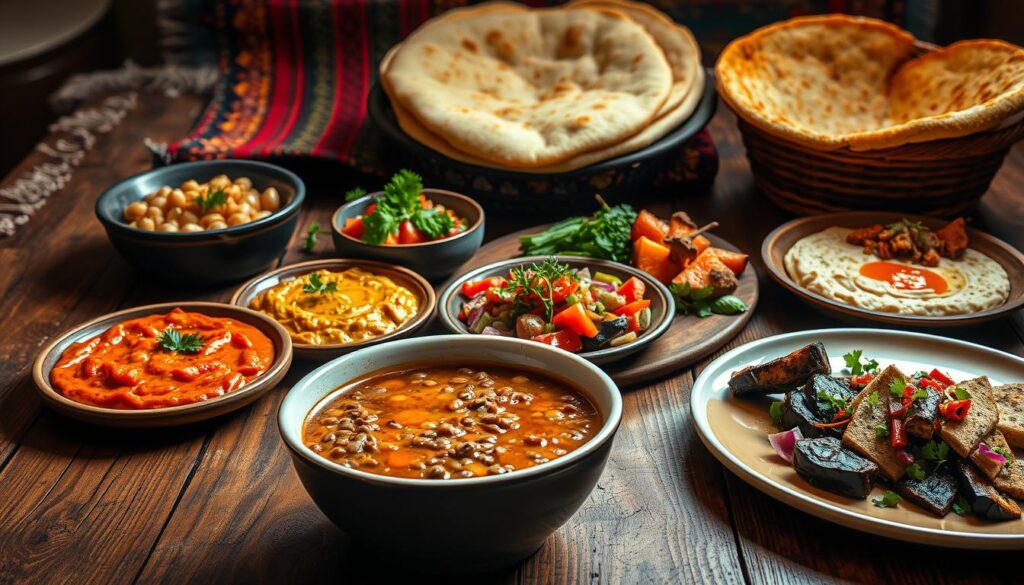
Introducing Turkish Cuisine to Your Kitchen
Bringing the vibrant flavors of Turkish cuisine into your kitchen opens up a world of culinary possibilities. You can explore home cooking Turkish recipes that are not only healthy but also satisfying. Traditional Turkish cuisine is recognized as one of the world’s healthiest diets, primarily due to its reliance on olive oil, spices, seasonings, and legumes such as chickpeas.
To successfully recreate these delicious meals, start by sourcing authentic ingredients. Look for quality olive oil, fresh herbs, and spices, which serve as the backbone of many traditional dishes. For protein options, you might consider dishes like Adana Lamb Kebab and Kofte Lamb Kebab, immensely popular offerings that are highly requested.
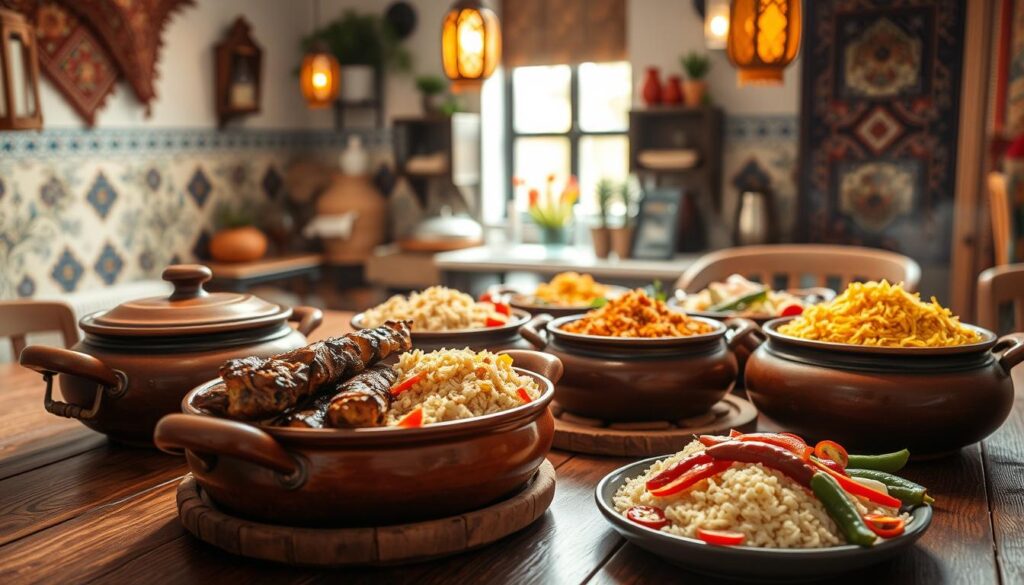
When cooking Turkish dishes, think about creating a mixed appetizer platter. Fill it with tabouli, Mediterranean salsa, baba ghanoush, and haydari to replicate the meze experience. These small dishes are perfect for sharing and pair well with drinks like rakı.
Don’t forget to experiment with traditional cooking methods. Techniques such as grilling, stewing, and even preparing dolmas—where various vegetables are filled with rice, meat, or spices—are key to making your Turkish cuisine at home truly shine. Even desserts like Turkish Delight and milk desserts offer a delightful way to end a meal, showcasing the beauty of this rich culinary tradition.
By embracing these techniques and recipes, you will immerse yourself in Turkish culture through your kitchen. As you explore, remember that cooking Turkish dishes can provide you not just with flavorful meals but also with a taste of history and community that continues to thrive today.
Resources for Turkish Recipes and Ingredients
Exploring Turkish cuisine can be a delightful journey, and to make it easier, you’ll want to know where to find resources for Turkish recipes and ingredients. Whether you are a beginner or an experienced cook, having the right tools and inspiration is essential for creating authentic dishes.
One of the best ways to dive into Turkish cooking is by investing in quality cookbooks on Turkish cuisine. Books like “The Sultan’s Kitchen” by Özlem Warren and “Istanbul: The Cookbook” byでしょうto not only offer traditional recipes but also provide cultural insights into the feasting practices of Turkey. These cookbooks often guide you through the key ingredients you’ll need, from spices to fresh vegetables.
When searching for where to find Turkish ingredients, local ethnic grocery stores are invaluable. Many urban areas have specialty markets that stock items like bulgur, sumac, and sheep’s-milk cheese, staples in Turkish recipes. If you can’t find a local store, online retailers like Amazon and specialty sites feature a robust selection of Turkish ingredients delivered right to your door.
For those wanting a more hands-on learning experience, consider joining an online cooking school that focuses on Mediterranean culinary techniques. Many of these platforms provide tutorials that guide you step-by-step in making popular dishes such as Turkish pide, gozleme, and even desserts like baklava.
Here is a helpful table summarizing different resources you can explore:
| Resource Type | Examples | Benefits |
|---|---|---|
| Cookbooks | “The Sultan’s Kitchen”, “Istanbul: The Cookbook” | Authentic recipes with cultural context |
| Ethnic Grocery Stores | Local markets, Whole Foods | Access to hard-to-find Turkish ingredients |
| Online Cooking Schools | Mediterranean culinary platforms | Hands-on learning and techniques |
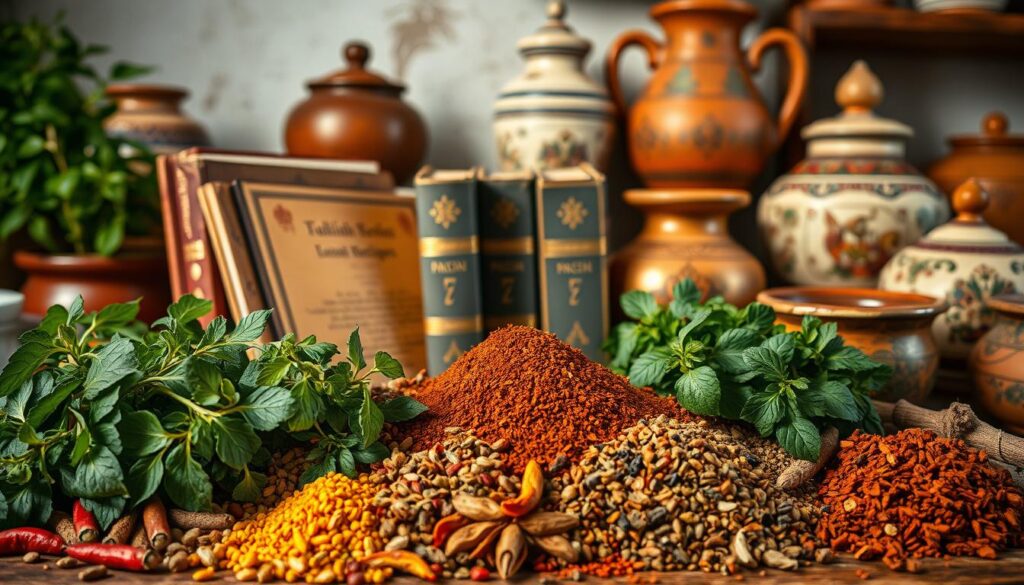
Cultivating a passion for Turkish cuisine is all about access. Using these resources for Turkish recipes, knowing where to find Turkish ingredients, and having cookbooks on Turkish cuisine at your fingertips will allow you to create delicious meals from the comfort of your own kitchen.
Conclusion: Embrace the Rich Tapestry of Turkish Cuisine
As you embark on your culinary journey through Turkish cuisine, you will discover that each dish tells a story, reflecting the country’s diverse landscapes, cultures, and history. Embrace Turkish cuisine not just for its flavors but also for the traditions and communal spirit that accompany the meals. With its increasing popularity globally, it’s evident that more people are eager to experience traditional Turkish food. The growth of Turkish restaurants in the United States alone highlights this trend, with many diners prioritizing authentic culinary experiences.
From the sizzling kebabs that dominate menus to the stunning array of mezes that serve as tantalizing starters, every meal is a celebration of shared flavors and vibrant ingredients. As you savor classics like baklava—now one of the most sought-after desserts in the West—you’ll find that Turkish cuisine invites you to explore further and deeper. This expansive food culture encourages you to embrace the richness of flavors available in every region, whether it’s the olive oil-infused dishes from the Aegean Coast or the hearty stews of Central Anatolia.
Your exploration doesn’t have to stop at the table; bringing Turkish dishes into your own kitchen allows for a unique experience to create cherished memories. So whether reveling in the lively atmosphere of a buzzing restaurant or crafting a meal at home, the opportunity to connect with Turkish heritage through food is an adventure worth taking. By embracing Turkish cuisine, you are not only delighting your palate but also participating in a rich culinary tradition that continues to thrive across the globe.


